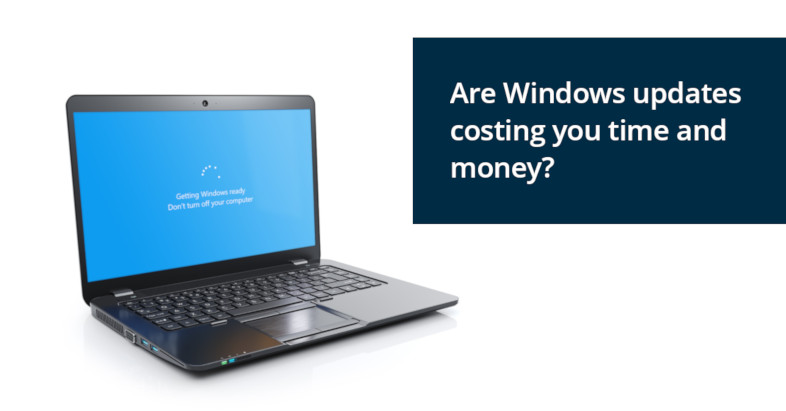
How to streamline your Windows 10 image testing
With Windows 10 moving to an OS-as-a-service model, enterprise IT teams are under increased pressure to efficiently manage the image creation and deployment process.
IT managers must now deal with major feature updates every six months and a steady stream of security patches and quality updates in between. Every update risks disrupting employee productivity and, unfortunately, some of these Windows updates have introduced unexpected compatibility and performance issues.
IT must now spend significant time and effort managing OS deployment. What used to be an occasional one-off project is now a continuous cycle of creating, testing, and deploying images. Running Windows 10 in an enterprise environment means adopting new processes to accommodate this continuous delivery model. IT teams must be flexible and agile, finding efficiencies in existing processes and developing new best practices. But shorter update cycles leave less time for testing, which is a risk for every enterprise.
"We create custom OS images for over 120 PC configurations. There is very little time to do any kind of performance testing."
IT Manager at a large international company
IT teams take different approaches to Windows 10 image testing. Some use a centralized approach, testing a representative sample of PC configurations in a dedicated testing environment. Others delegate application testing to business groups and application owners to report back on compatibility and user experience.
In both cases, there is a lot of time-consuming manual work involved. Evaluating PC performance manually is slow, tedious, and difficult. It is hard to collect, analyze, and compare different forms of performance data. With a manual approach, it's also harder to ensure that the testing is consistent and easily repeated over time.

Faster, more successful Windows 10 image creation
We're often asked how benchmark testing can help streamline the Windows 10 image creation process. The good news is that benchmarking offers many advantages over manual performance testing.
Time saved through automation
Benchmarks developed by UL Solutions are designed to be easy to install, set up, and run. In most cases, you can start benchmarking with a single click. You can also configure and run our benchmarks from the command line with scripts. For more complex environments, our Testdriver automation solution supports testing hundreds of PCs over your network.
Automated benchmark testing can save you hours of repetitive manual work. Even better, while the tests are running, you can focus on other tasks to make the best use of your time.
Consistent and repeatable testing
One of the biggest challenges of testing PC performance manually is ensuring that the test is repeatable. Fortunately, benchmarks are designed with consistency in mind from the start.
Using a well-designed benchmark is the best way to guarantee that you are testing the same thing, the same way, every time. This consistency is essential when it comes to comparing the performance of a new OS image against your baseline.
UL Solutions' benchmarks take the guesswork out of manual performance testing. Our benchmarks are developed in partnership with leading technology companies to ensure that the tests are accurate, relevant, and impartial.
Easy analysis and reporting
Benchmarks commonly produce an overall score as a measure of performance. UL Solutions' benchmarks also produce a range of sub-scores that help you understand specific system capabilities.
Comparing the performance of two OS images is as easy as comparing the scores. With our popular PCMark 10 benchmark, you can export your benchmark results as PDF files or XML for record keeping and further analysis.
Our Testdriver automation solution collects and stores all your benchmark results in your own private database. It also offers powerful, built-in reporting, charts, and data analysis tools.
How to test Windows 10 image performance
For Windows OS image testing at scale, we recommend pairing our PCMark 10 benchmark suite with our Testdriver automation solution.

PCMark 10
PCMark 10 is the latest version of our industry-standard PC benchmarking software. PCMark 10 measures complete system performance with tests based on real-world applications and activities.
Its tests cover common office productivity tasks and digital content creation activities as well as everyday essentials, such as web browsing, video chat, and app start-up time.
With the PCMark 10 Applications benchmark, you can measure practical, real-world PC performance with tests that run in Microsoft Word, Excel, PowerPoint and Edge.
Testing Windows 10 image performance with PCMark 10 is quick and easy. Run the benchmark on your current image to set a baseline. Then repeat the tests on the new image to assess the performance impact of updates and configuration changes.
Each benchmark run produces a high-level benchmark score, mid-level use-case scores, and low-level workload scores for greater insight into system performance. With PCMark 10, comparing the performance of two OS images is as easy as comparing the scores.

Testdriver
Testdriver works with PCMark 10 to streamline and automate benchmarking at scale. It's the ideal tool for IT teams that need to support a wide range of PC configurations. With Testdriver automation, you can schedule and run benchmarks on any PC on your network. You don't have to be physically present at the PCs you are testing. Everything is controlled from Testdriver's convenient browser-based console.
Your benchmark results are automatically saved in your own private database. You can explore the database with Testdriver's powerful built-in reporting and result management or use your own business intelligence software and tools.
Start testing today
Start testing Windows 10 image performance today
IT professionals the world over choose UL Solutions' benchmarks to measure, understand, and manage computer hardware performance. We create the industry's most trusted and widely used performance tests, helping IT professionals like you make more informed decisions.
Contact us to learn more about streamlining your OS image creation process by automating performance testing with UL Solutions' benchmarks.
Contact us